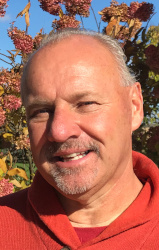
Canadian crop producers are headed into a spring planting season that’s a lot more complicated than usual. Farmers in parts of Alberta and Saskatchewan can’t seed until they harvest last year’s crop. Others are distracted by issues related to bins full of damp grain, railroad blockades and global market fears related to the spread of COVID-19.
All of those troubles aside, farm advisors say the years ahead may hold more bad news for growers who don’t use their farm financials to make decisions that impact profits.

“Farmers need to understand the cost structure and profitability of their existing operation so they can more accurately measure the risk/benefit of holding grain longer, utilizing more credit, expanding the farm, buying land, and so on”
Shannon Lueke
FARM BUSINESS ADVISOR
MNP
Shannon Lueke is a farm business advisor with MNP in Saskatchewan. Lueke says she’s meeting too many farmers borrowing on long-term assets to finance short-term obligations. “We’re finding that some farmers have a false sense of profitability,” she says. “They think that ‘as long as the bank is lending me money, I must be doing good.’”
Lower commodity prices will exacerbate the problem for farmers who make business decisions based on the wrong numbers. “Some farmers are talking about holding their 2019 crop, or a portion of it, all the way to this year’s harvest because the price might go up,” says Lueke. Instead of prioritizing cash flow, these growers are using borrowed dollars to pay off last year’s credit accounts. Others are expanding rented acres without understanding their profitability on their existing land base.
Lueke says many crop producers are coming off a decade of strong production and commodity prices, but they haven’t planned for a bad year. “What we’re telling our clients to do is focus on cost structure, on the cost of production,” she says. “They need to understand the cost structure and profitability of their existing operation so they can more accurately measure the risk/ benefit of holding grain longer, utilizing more credit, expanding the farm, buying land, and so on.”
Ditto for investing in “big data” tools as a plan to make more money by optimizing production with inputs. Information is power, but it’s not money in the bank. “It’s not about the data, it’s about what you’ll do with it,” says Lueke.
RISK MITIGATION
Brian Wittal sees the same issues in his farm advisory practice headquartered near Didsbury, AB. Wittal, who encourages growers to spend more time on risk mitigation, points his own clients to Agrishield, by Farm Management Canada.

“There’s conclusive evidence that producers who follow key risk management practices on their farms see definite financial results”
Brian Wittal
FARM BUSINESS ADVISOR
DIDSBURY, AB
A comprehensive risk management planning tool that covers everything from finance to markets, labour, production and environment and climate, Agrishield costs $149 a year, and Wittal says it’s worth every penny. “There’s conclusive evidence that producers who follow key risk management practices on their farms see definite financial results” he says.
Wittal also wants to see farmers adopt accrual accounting, which records revenues and expenses when they are incurred. On the expense side, that means you track expenses when they’re billed, not paid; you tally money in the bank when it’s actually in the bank. “It’s not just a different way of keeping your records, it tracks performance,” he explains. “You give yourself year-over-year numbers you can compare.”
Like Lueke, Wittal wants farm businesses to track profit margins and the cost of servicing debt. “If you’re coming out of a year with tight cash flow, you need to ask if this is a good time to be strapping on more debt,” says Wittal.
A risk management and mitigation plan must also answer questions about farm succession, adds Wittal. Are you cruising to retirement and a liquidation of assets? Do you want to help a new generation step in? Will everyone on your farm answer these questions the same way?
“Your lack of a written succession plan doesn’t mean decisions aren’t being made. It means the decisions you’re making are probably wrong,” says Wittal. He adds that no plan can become a panic-driven plan inspired by a hospital bed, which is never a good approach.
SOCIETAL RISKS
On a completely different, but no less important note, the whole business of farming may have some “softer” risks worth thinking about.
Steve McQueen is a certified crop advisor who lives on a farm near Brownsville, ON. He spent the first 25 years of his career as a custom farm operator, supporting area farmers with planting, monitoring and harvesting a wide variety of crops. Now working for Emerald BioAgriculture Corporation, McQueen does farm-level research, developing and selling crop inputs using Emerald’s ingredients.
Looking ahead to the risks his industry faces in the next five years, McQueen is convinced growers must work alongside other industry players to fortify relationships between agricultural producers and society.

“Agriculture is a multi-million-dollar business. We’re good stewards of the land and we need to be ready to explain what we do and why we do it”
Steve McQueen
CROP ADVISOR
EMERALD BIOAGRICULTURE
CORPORATION
The farmers McQueen works with across Canada work hard to grow food and keep their soil in a regenerative state. He says they should also be talking to people outside the industry about issues like global food security and carbon sequestration. He believes agriculture has a story to tell about sustainable production and global health. “But we have to build a relationship before we tell the story,” he says. “Agriculture is a multi-million-dollar business. We’re good stewards of the land and we need to be ready to explain what we do and why we do it.”
McQueen’s position gets no argument from Lueke and Wittal. Their only caveat: Farmers need to start asking more questions about their individual businesses, too. In Lueke’s words, “I want to work with farmers who aren’t afraid to let their guard down and learn new ways of looking at their business.”
Risk management isn’t scary, says Wittal. “A comprehensive review of the risks on their farms will help them determine what their priorities are and what they need to focus on. That’s how you prepare today’s farm for tomorrow. Without a plan, if something happens, all you can do is react to it.” FF
Websource: www.myagrishield.ca